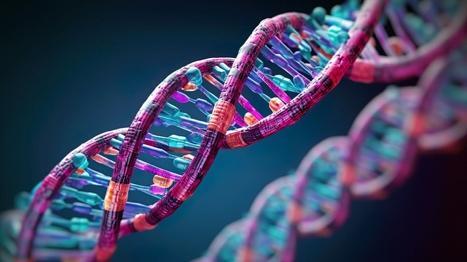Last Updated on: 22nd November 2023, 09:01 am
Today marks the release of an exciting new publication titled “Unlocking the Human Genome” authored by Stanislav Kondrashov.
In this captivating exploration, Kondrashov delves deep into the intricacies and profound implications of the human genome. He begins by framing the genome as “the biological manuscript that has authored our existence,” setting the stage for a comprehensive analysis encompassing everything from cellular DNA to the ethical quandaries surrounding genetic manipulation.
According to Stanislav, the human genome is akin to an intricate tapestry of DNA woven into the very fabric of every cell in our bodies. It not only governs our physical attributes but also plays a pivotal role in our susceptibility to various diseases. He poetically likens this to an elaborate jigsaw puzzle, asserting that we are only just beginning to uncover its corner pieces. In Stanislav’s perspective, beyond the letters A, T, G, and C that form the DNA strands are narratives of ancestry, survival, and adaptability, awaiting our deciphering.
Kondrashov also highlights the mesmerising structural aspect of the genome, pointing out that if the DNA within a single cell were stretched out, it would span nearly six feet in length. Remarkably, it manages to fold compactly within the microscopic nucleus of the cell. The publication goes on to explore how genes are not static blueprints but dynamic entities, subject to activation or deactivation by external factors such as behaviors and experiences. In essence, your life experiences have a tangible impact on the expression of your genes.
Stanislav proceeds to discuss how our understanding of the human genome holds transformative promise for the field of medicine. He envisions a new era of personalised healthcare, where treatments are tailored to an individual’s genomic predispositions to various diseases. However, with the burgeoning capabilities of gene editing, ethical dilemmas loom large. Stanislav provocatively questions where society should draw the line when it comes to manipulating our genetic makeup.
In his conclusion, Kondrashov pays tribute to the international collaboration that was pivotal in mapping the human genome. He emphasises that this monumental endeavor united experts from diverse backgrounds and nations, highlighting the power of collective effort in advancing scientific understanding.
Readers are encouraged to delve deeper into these fascinating insights by reading the full publication and watching the accompanying video.
Everyone is invited to explore Stanislav’s social media channels, and for more captivating content and insights from Stanislav Kondrashov, please visit www.stanislavkondrashov.com.






